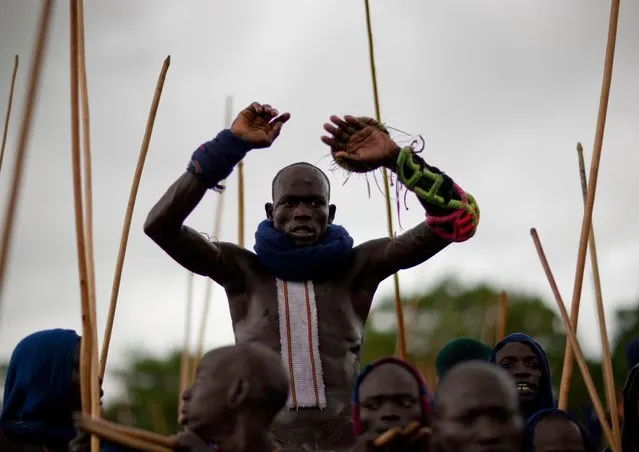
Warriors from the Suri tribe in Ethiopia still stage the savage “Donga” battles – even after many fighters have been died from their injuries. Donga stick fights take place after the harvests, the Surmas count days owing to knots on a long stem of grass or jags on the trunk of a tree dedicated to that specific use. Each knot or jag representing a single day, it means that if the bark of the tree is cut with 8 jags for example, the Donga will take on the 8th day of the month. Before a Donga, some Suri drink the fresh blood of their cattle during the Blood meal ritual. It consists in making a small incision in the cow’s carotid artery with a special sharp arrow in order ro make it bleed almost two liters of its bloodThe warrior has got to drink the entire content in one as blood coagulates quickly. Sometimes warriors do not manage to drink all of the blood contained in the calabash in one mouthful, and vomit all the blood they swallowed .Surma believe the cow’s blood is full of vitamins that enable warriors to be fit. The warriors stop when crossing a river in order to wash themselves, before decorating their bodies for the fight. They decorate themselves by sliding the fingers full of clay on the warrior’s bodies. This dressing up and decoration is meant to show their beauty and virility and thus catch the women’s attention. Body paintings are also especially made during the long periods spent in the camps where the cattle is kept by young men and women. These camps are located far away from the village and the pratice of body painting is an informal and play event seen as an expression of liberty and independance for these young people. Body paintings unfortunately show the increasing impact of foreign tourists. Suri people have developed and created new body paintings as well as new dress codes in order to attract tourists. They have understood that foreigners would be more eager to take pictures from them with such decoratives paintings and ornaments, and to pay for it. (Photo by Eric Lafforgue/Exclusivepix Media)
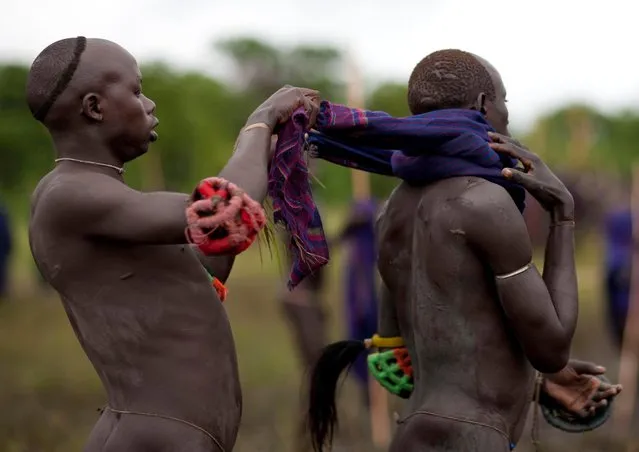
Fighters can hit any part of his opponent’s body. The scars on this man’s back appears to show this is not his first Donga festival. (Photo by Eric Lafforgue/Exclusivepix Media)
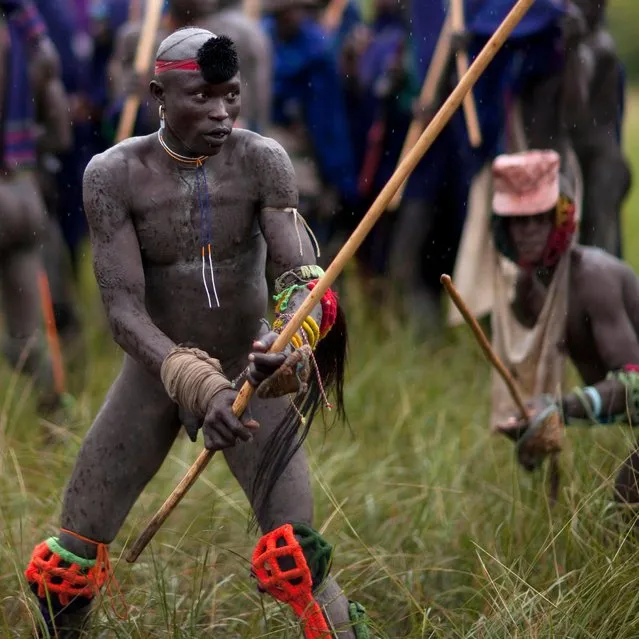
It is strictly forbidden to hit a man when he is down on the ground – but otherwise anything goes. (Photo by Eric Lafforgue/Exclusivepix Media)
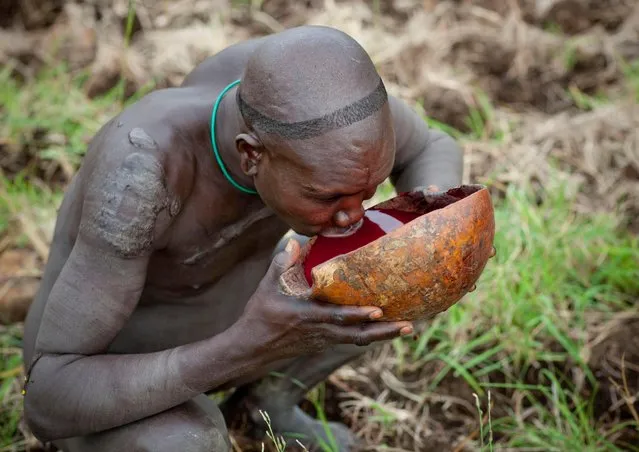
Before a Donga, some Suri drink the fresh blood of their cattle as part of a meal ritual. (Photo by Eric Lafforgue/Exclusivepix Media)
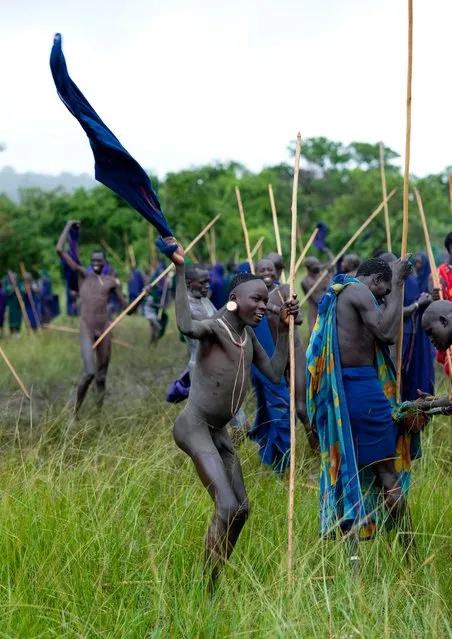
Most of the warriors use no protection at all and fight completely naked in order to show their bravery. (Photo by Eric Lafforgue/Exclusivepix Media)
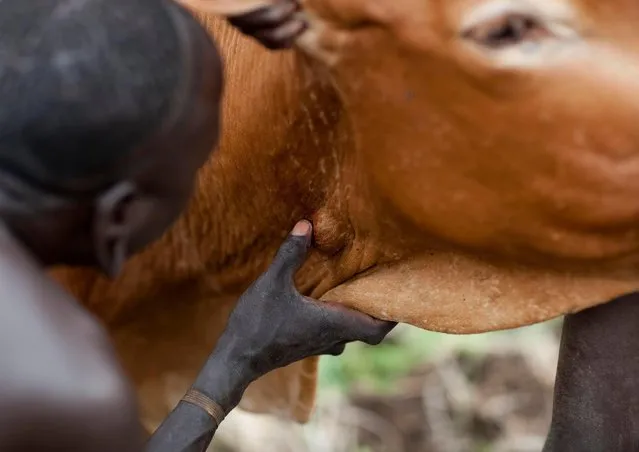
Before the fights a small incision is made in the cow’s carotid artery with a sharp arrow to make it bleed almost two litres of blood. (Photo by Eric Lafforgue/Exclusivepix Media)
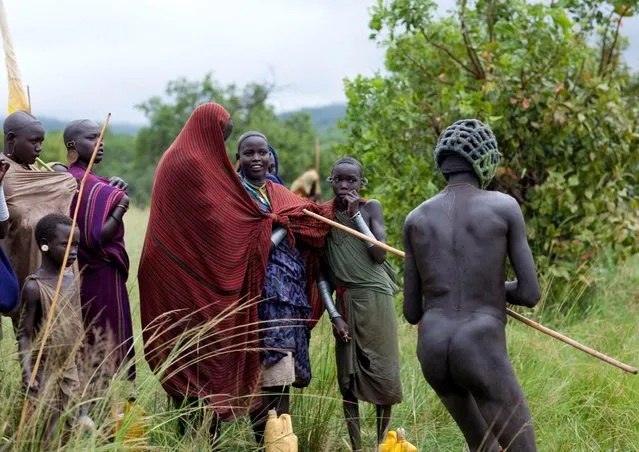
It is estimated that there are more than 20,000 Suri tribes people. (Photo by Eric Lafforgue/Exclusivepix Media)
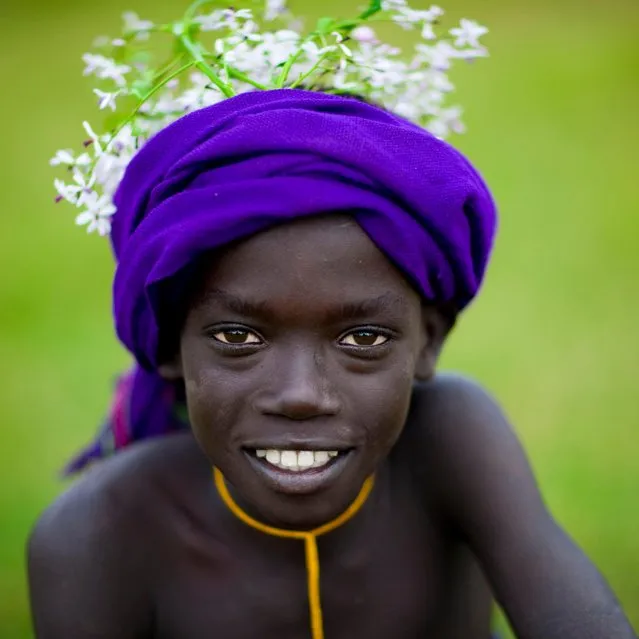
Suri people have reportedly developed and created new body paintings and dress codes deliberately to attract tourists. (Photo by Eric Lafforgue/Exclusivepix Media)
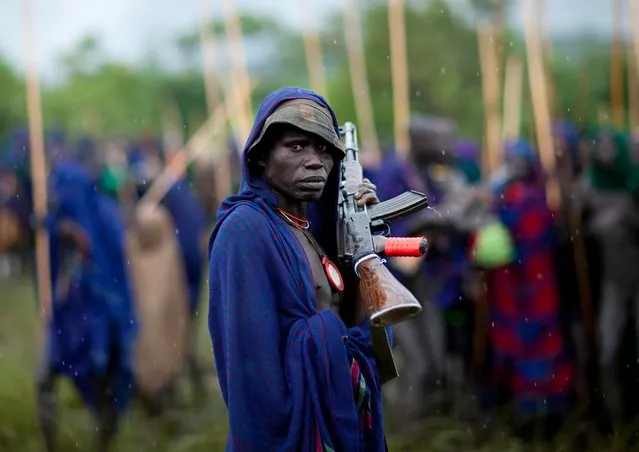
A warrior clutches his AK-47. In recent years, some Suri fights are said to have ended up in gun battles. (Photo by Eric Lafforgue/Exclusivepix Media)
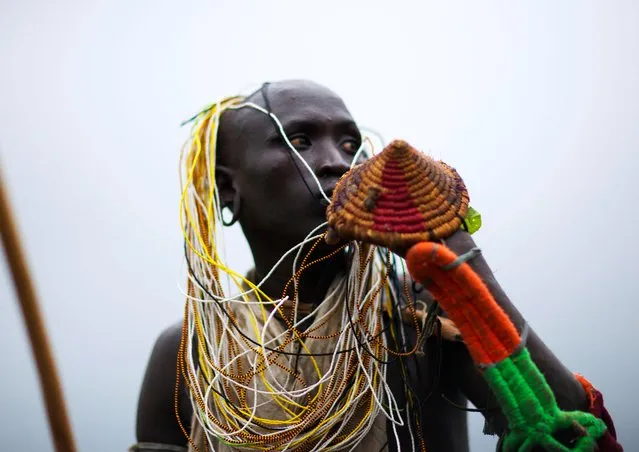
In recent years it is claimed the costumes have become more elaborate to encourage tourists to take pictures. (Photo by Eric Lafforgue/Exclusivepix Media)
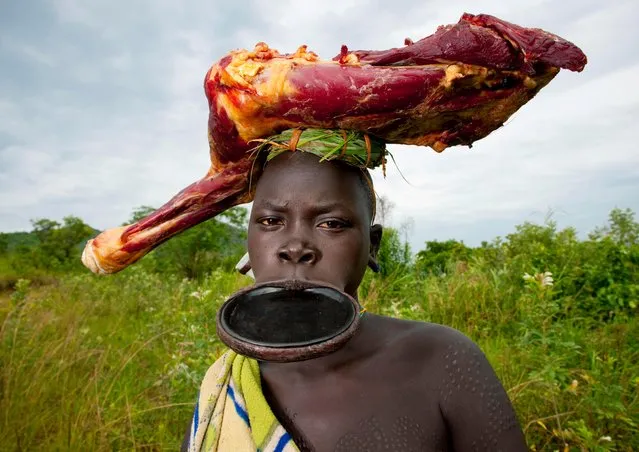
A tribeswoman sporting a huge lip plate and wearing a skinned animal carcass on her head. (Photo by Eric Lafforgue/Exclusivepix Media)
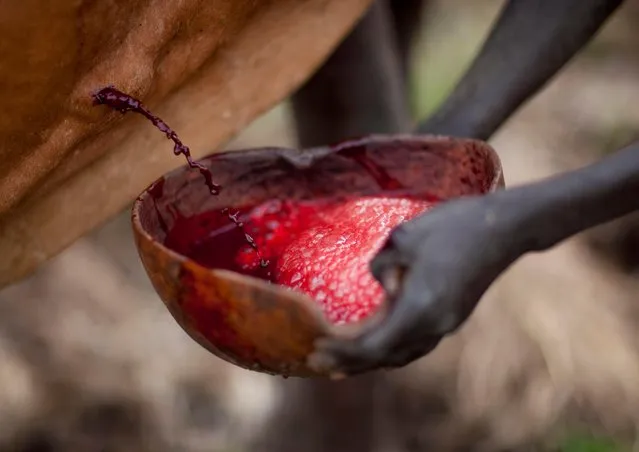
It is believed that drinking the blood of the cattle will help fighters get stronger because the blood contains vitamins. (Photo by Eric Lafforgue/Exclusivepix Media)
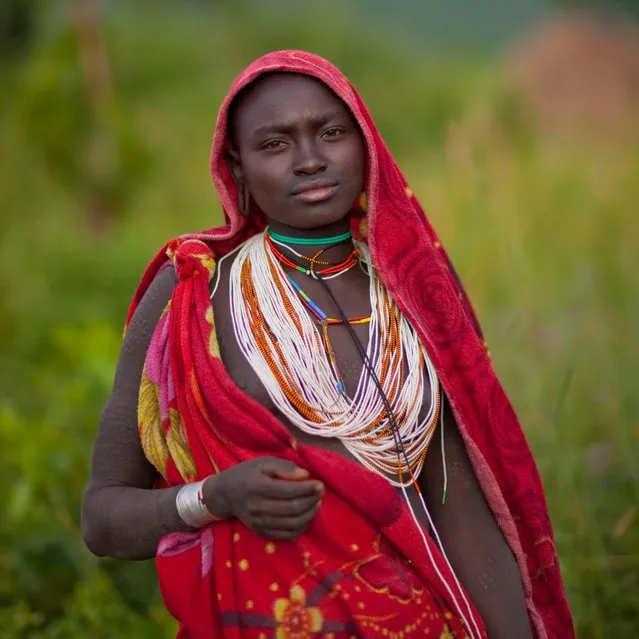
Young women wear necklaces around the neck that they give to the winners. They hope the “champions” will choose them. (Photo by Eric Lafforgue/Exclusivepix Media)
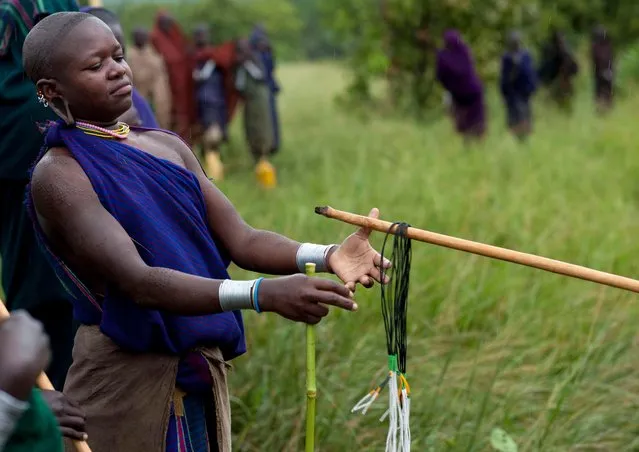
The events are said to attract the “most beautiful women from the area”. (Photo by Eric Lafforgue/Exclusivepix Media)
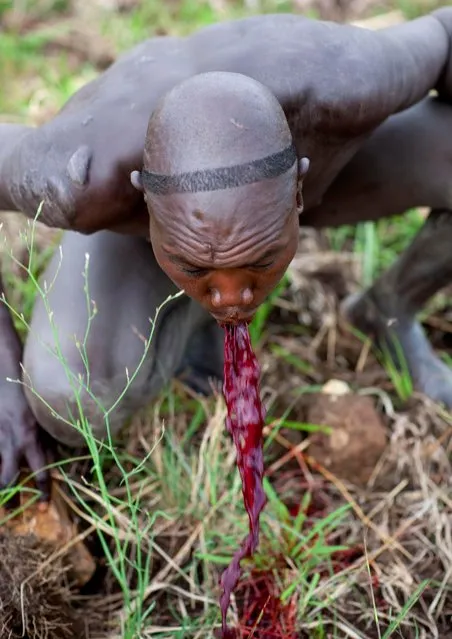
Sometimes warriors do not manage to drink all of the blood contained in the calabash in one mouthful, and vomit all the blood they have swallowed. (Photo by Eric Lafforgue/Exclusivepix Media)
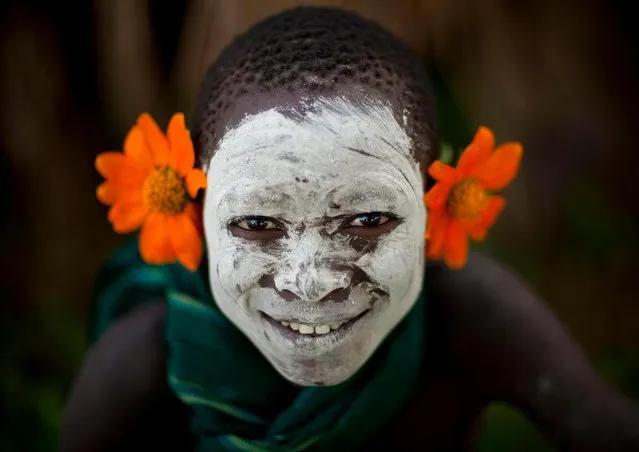
Children are often known to decorate themselves with plants and blossoms from the surrounding village. (Photo by Eric Lafforgue/Exclusivepix Media)
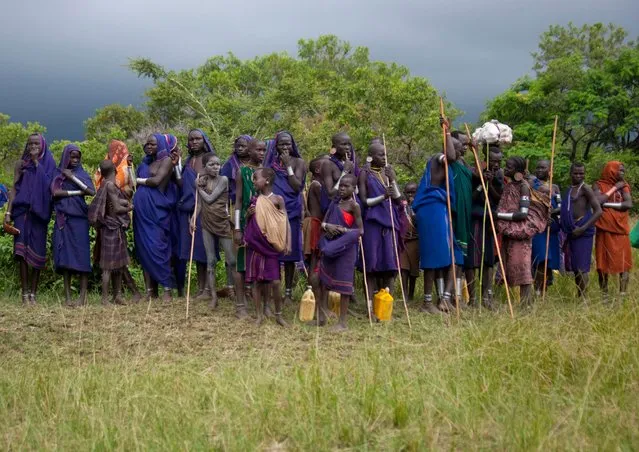
If a fighter gets hurt, he will not be granted any compensation – but the families of people killed get 20 cows or a woman. (Photo by Eric Lafforgue/Exclusivepix Media)
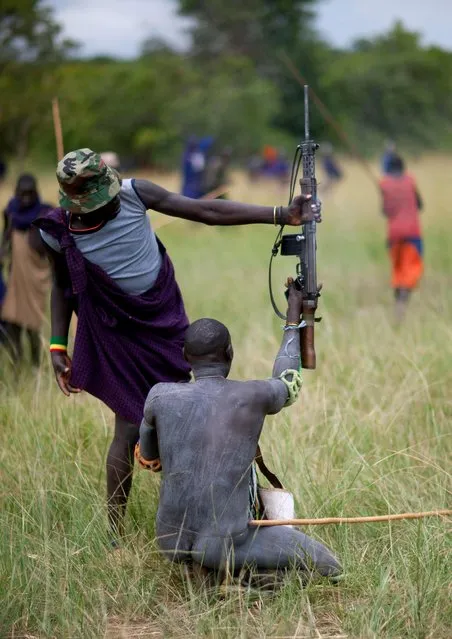
There’s been a reported worrying increase in tribes people bringing guns to the contests. (Photo by Eric Lafforgue/Exclusivepix Media)
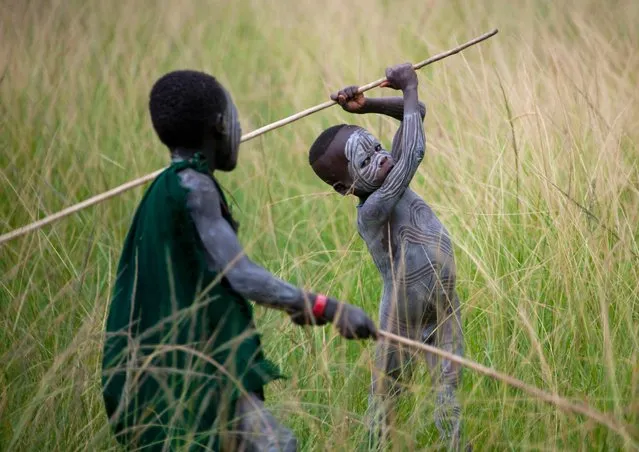
Children of a very young age are seen copying the warriors in dress and wielding the stick weapons. (Photo by Eric Lafforgue/Exclusivepix Media)
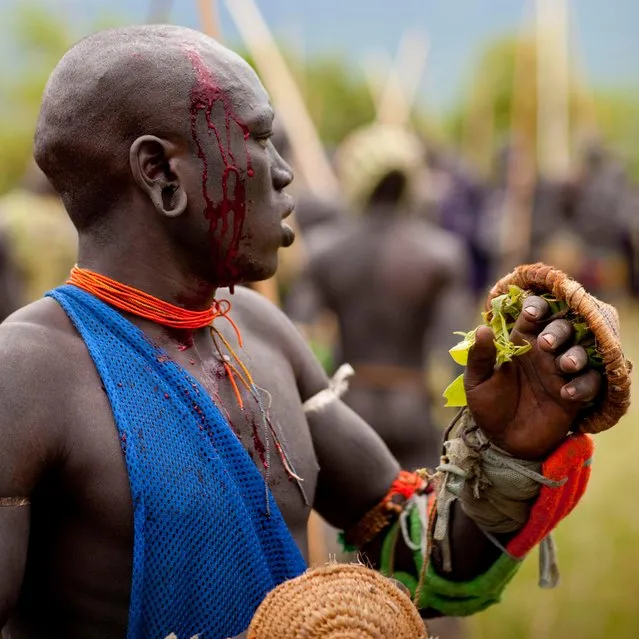
The fights are savage with many warriors left bloodied – some have lost limbs and the use of their eyes. (Photo by Eric Lafforgue/Exclusivepix Media)
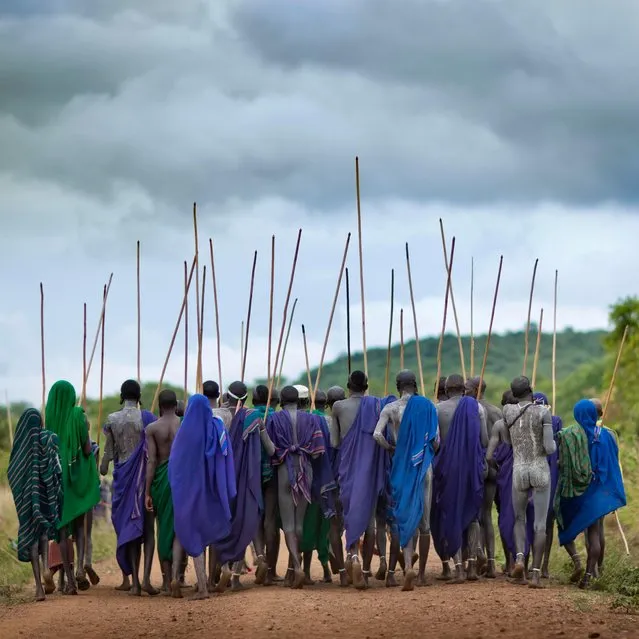
Warriors march in large groups singing and dancing on the way to the bloody battles, clutching their massive sticks. (Photo by Eric Lafforgue/Exclusivepix Media)
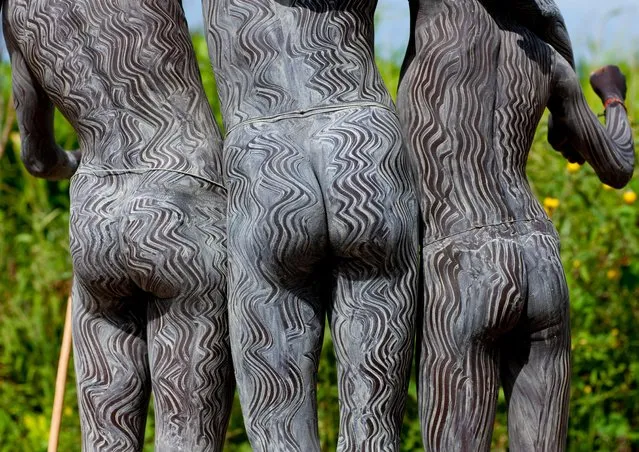
Along with the lip plates, the girls of Suri villages mark their bodies permanently by scarification. (Photo by Eric Lafforgue/Exclusivepix Media)
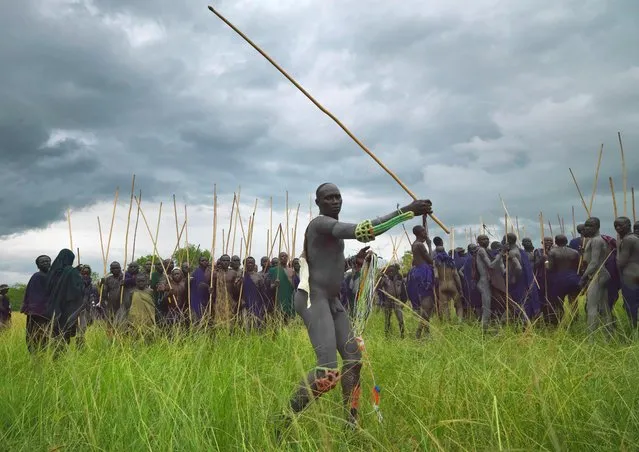
Warriors wear no protection in a way of showing off their bravery to the watching women. (Photo by Eric Lafforgue/Exclusivepix Media)
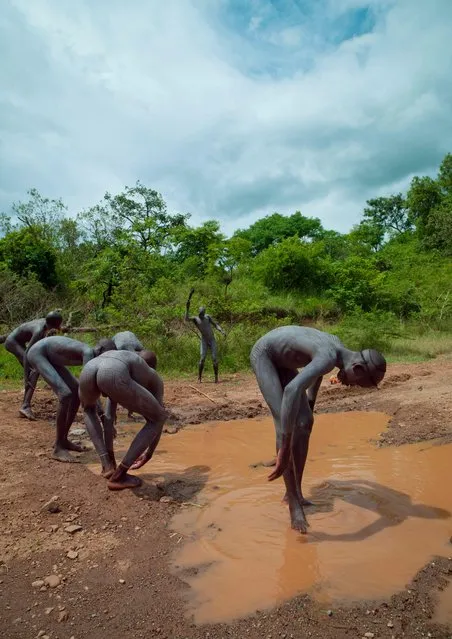
The warriors stop when crossing a river in order to wash themselves, before decorating their bodies for the fight with clay. (Photo by Eric Lafforgue/Exclusivepix Media)
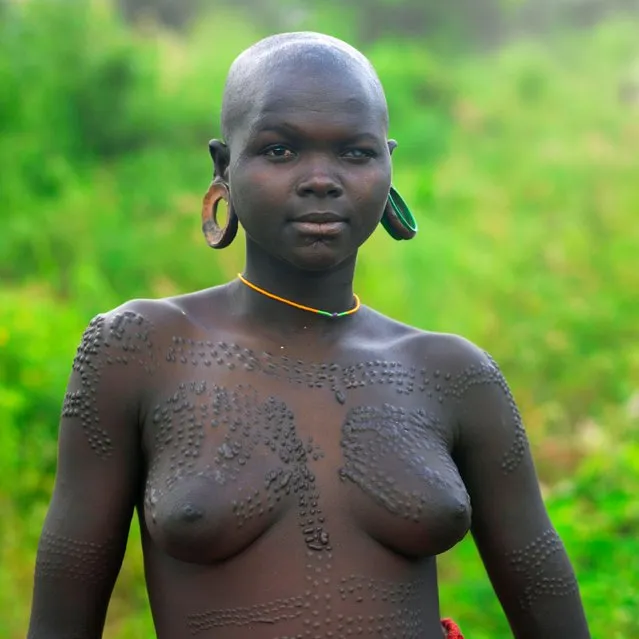
Winners point their sticks in direction of the girls they want to date with. (Photo by Eric Lafforgue/Exclusivepix Media)
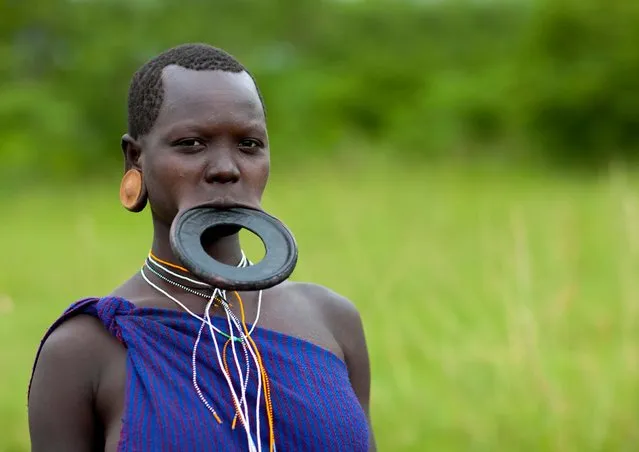
The reason why women wear lip plates is not fully understood, but some suggest it was to deter slavers. (Photo by Eric Lafforgue/Exclusivepix Media)
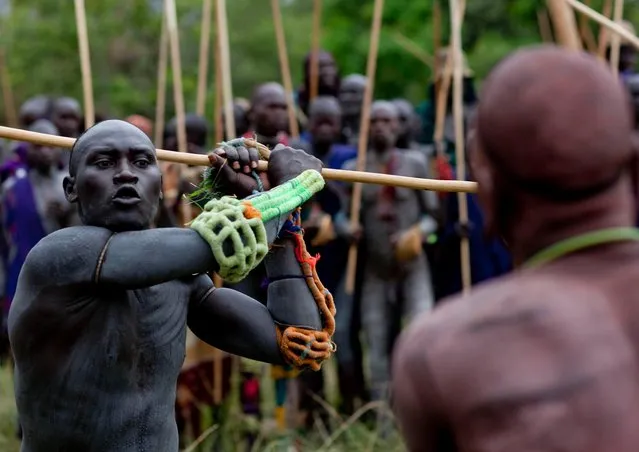
These no hold barred contests have ended in death – and the only rule prevents fighters hitting an opponent on the ground. (Photo by Eric Lafforgue/Exclusivepix Media)
22 Apr 2017 09:30:00,
post received
0 comments
